 Picture:
Picture:  Sound:
Sound:  Extras:
Extras: 
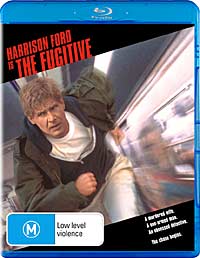
Movie:  Picture:
Picture:  Sound:
Sound:  Extras:
Extras: 
 (Australian rating); Region Free
(Australian rating); Region Free
This is the video bitrate graph for this movie, generated by BDInfo 0.5.2:
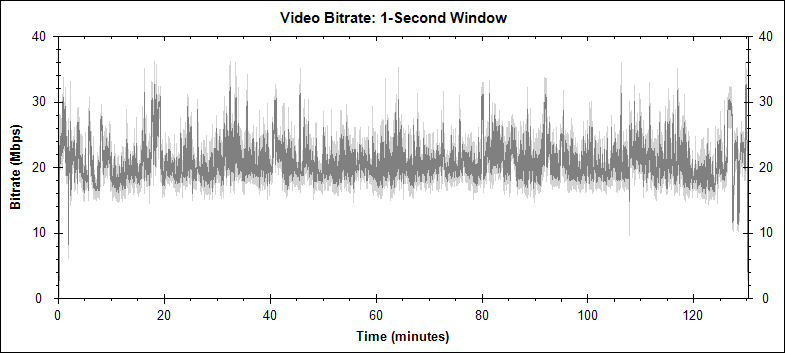
The detail is from that last scaled version, and has not been rescaled again. The right side is from the Australian Blu-ray. This has not been scaled at all. Different applications were used to capture the two frames, so I am not comfortable comparing the colour between the two, merely the detail and sharpness. For visitors from NTSC lands, generally the PAL DVD is just a touch sharper than the NTSC DVD.
It seems, according to the Blu-ray version, the man has a weave in his suit:
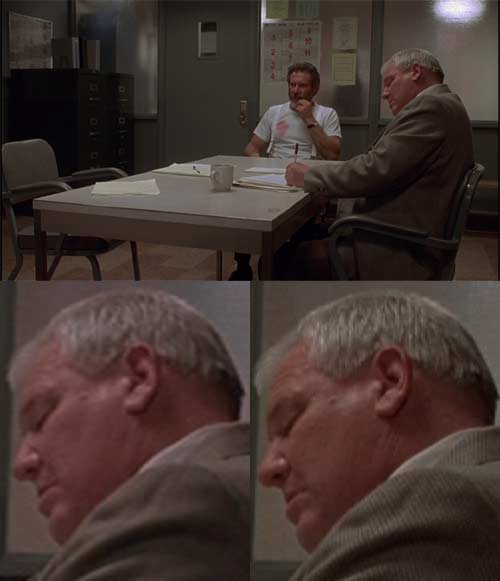
Harrison conducts bodily repairs, and Blu-ray doesn't make a whole lot of difference. But with that poster to the top left of the frame, the text is noticably sharper in the Blu-ray version, although I haven't bothered to demonstrate it here.
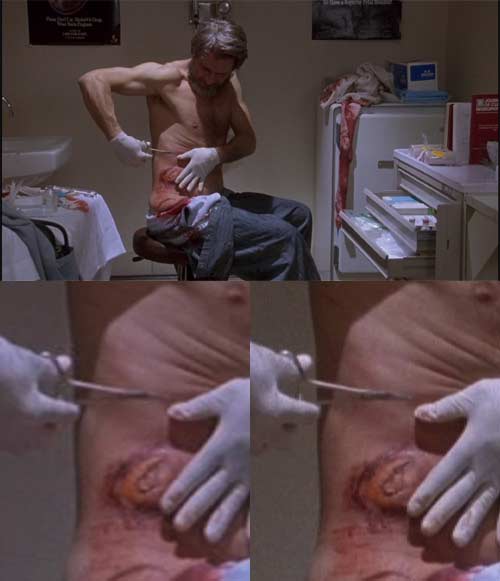
Blu-ray here is a little sharper, but not be as much as more recent movies have shown. I suspect a fairly soft movie source:
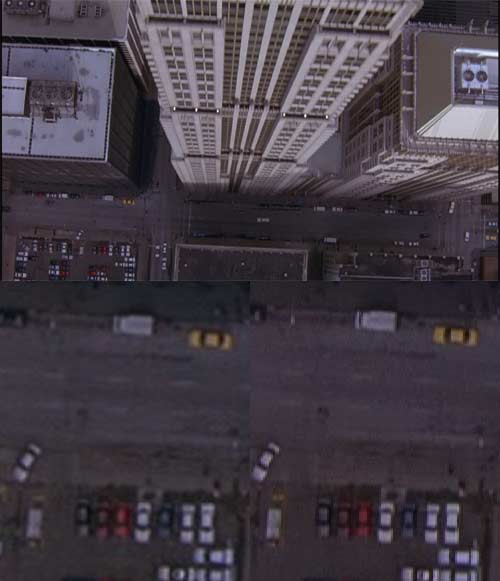
This one is quite interesting. The Blu-ray yields a touch more sharpness and detail than the DVD. See, for example, the word 'POLICE' on the side of the car, or the row of lights on its top. Now look at the vertical pillars of the car and you will see jaggies on them on the Blu-ray. I did notice unexpected jaggies while viewing this movie here and there. Here I managed to copy it. More on the jaggies with the next comparison below.
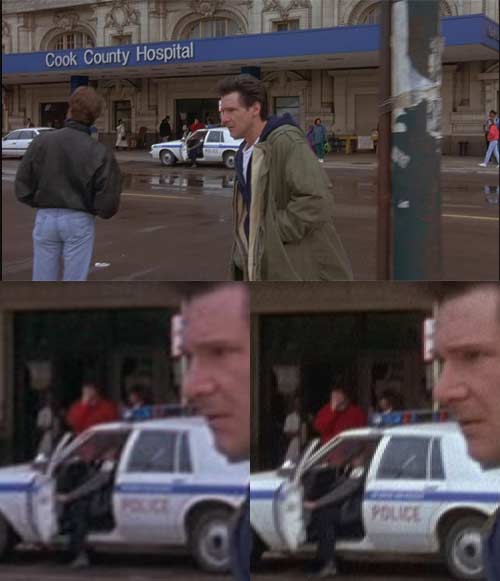
With this shot I've blown up a section of the two details above to 300% of their original size so that you can see more clearly why there are jaggies. The little boxes on the left hand side show you how big the jaggies should look on the right hand, Blu-ray, side. Obviously they are twice as big as that. It is tempting to conclude that the Blu-ray only uses 960 by 540 pixels of resolution, but that is not the case. Most of this scene features smooth transitions from pixel to pixel, rather than having them grouped into clumps of four pixels (in a two by two grid), which is what you would expect if a 960 by 540 pixel picture were upscaled to 1,920 by 1,080. But when you look closely at those pillars, the pixels are grouped into blocks of four close, but not identical, pixels.
Could it be that a lower resolution scan of the frames was scaled up, and some sharpening algorithm was applied in the process which only had its effect upon high contrast transitions, such as white car pillars against a dark background?

Just as a further check, the left side of this shot is a detail from a frame of the recently released Blu-ray version of The Godfather. As you can see, the jaggies in this are only half the size of those in The Fugitive:
